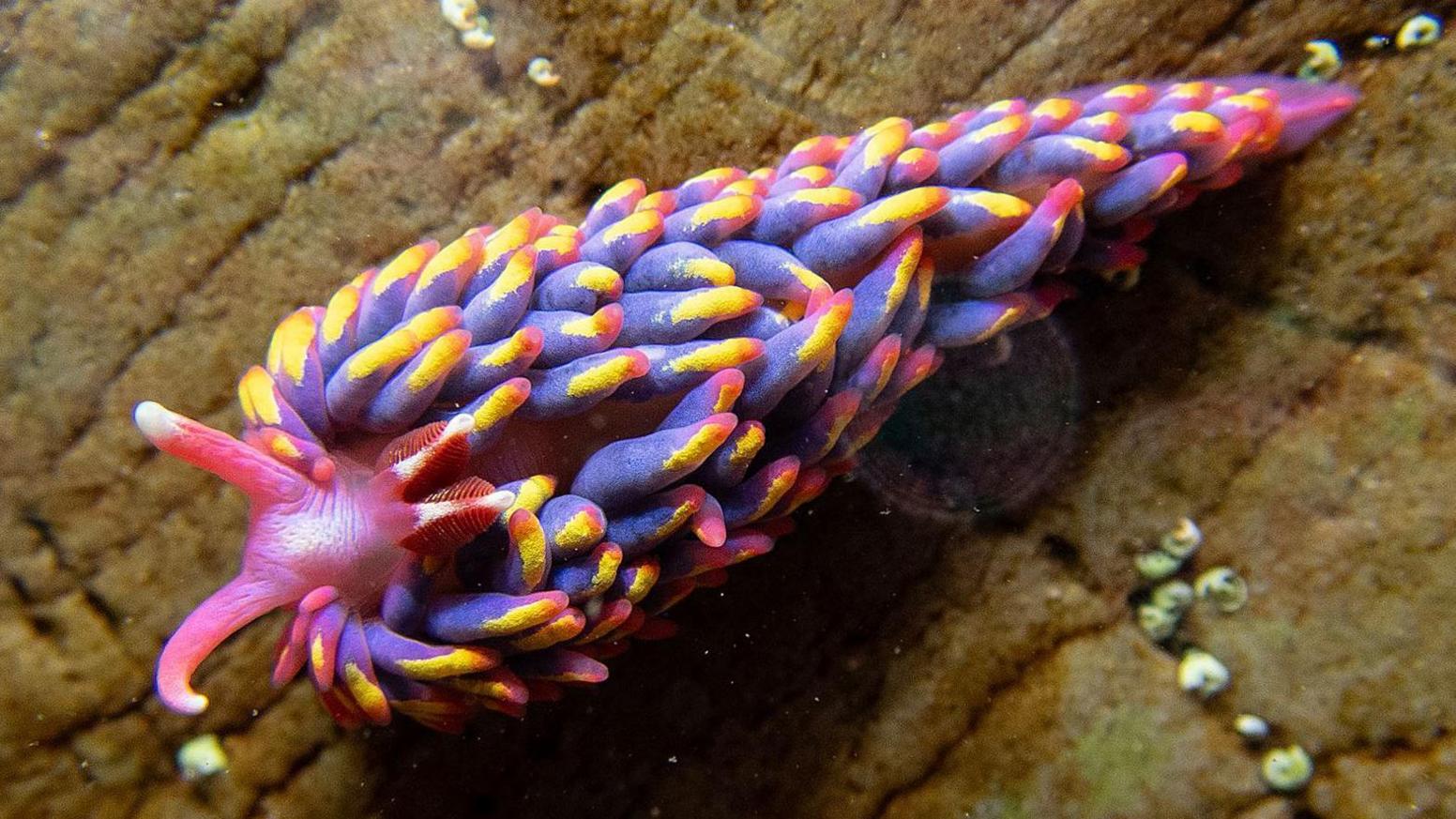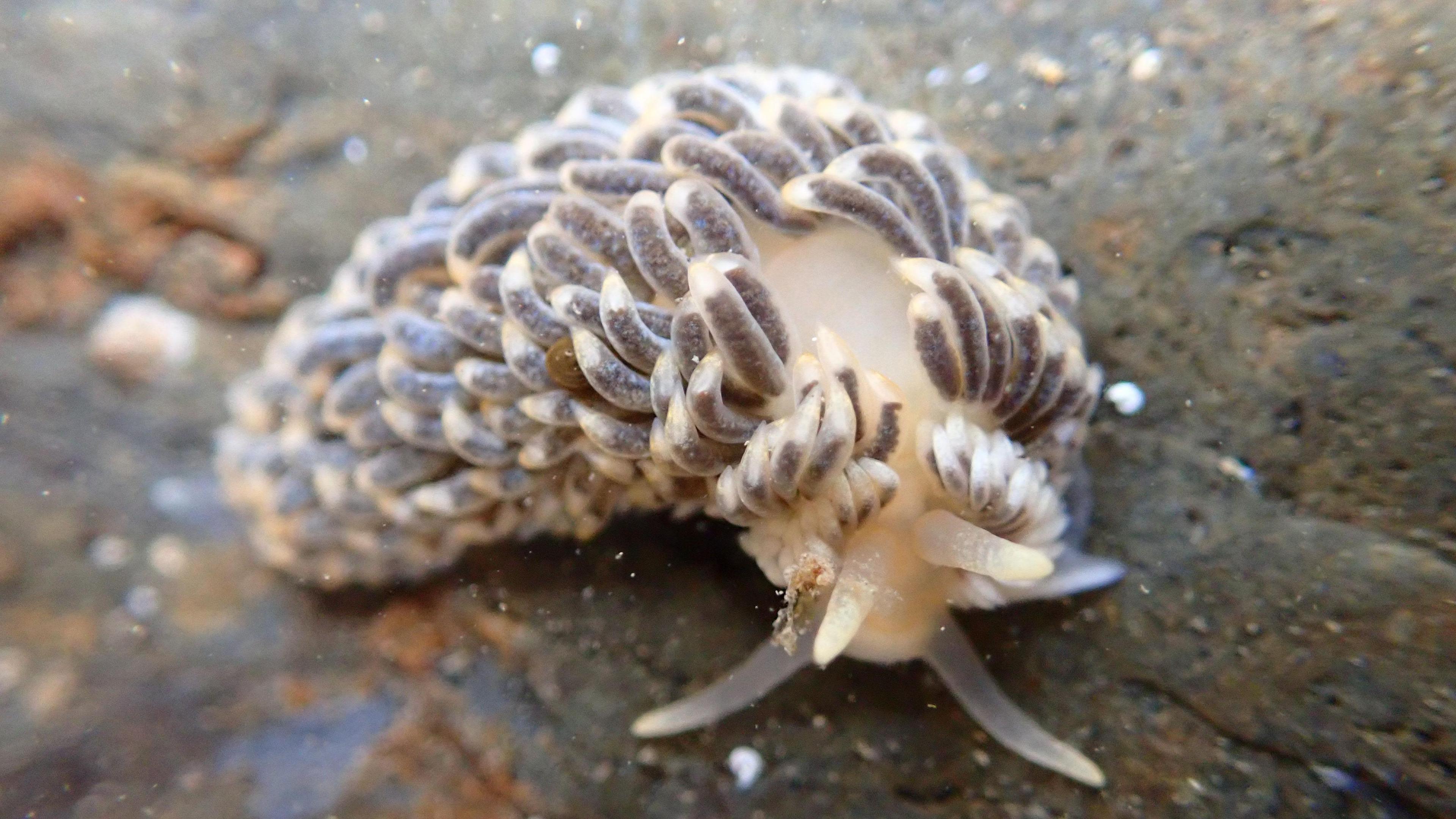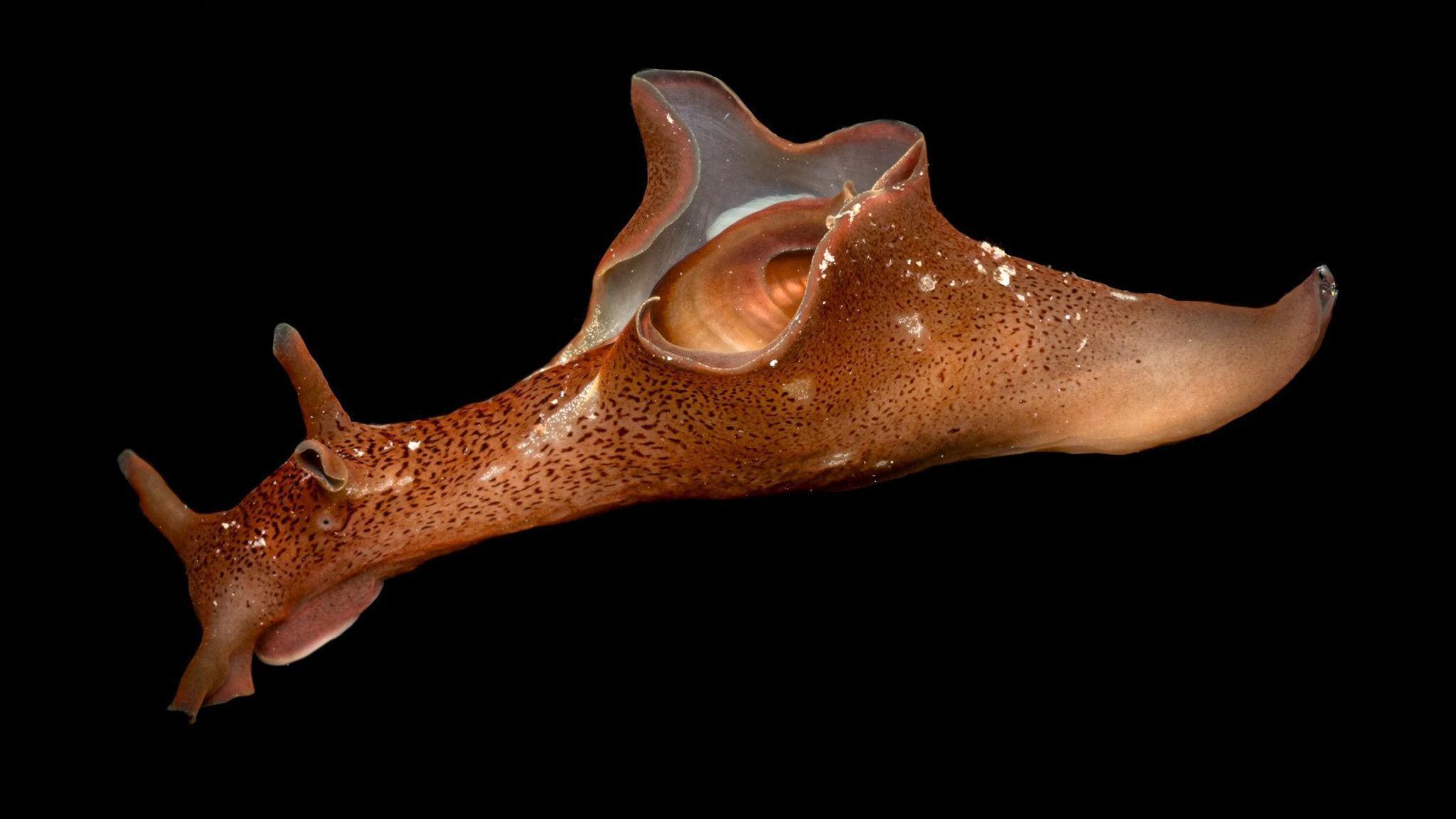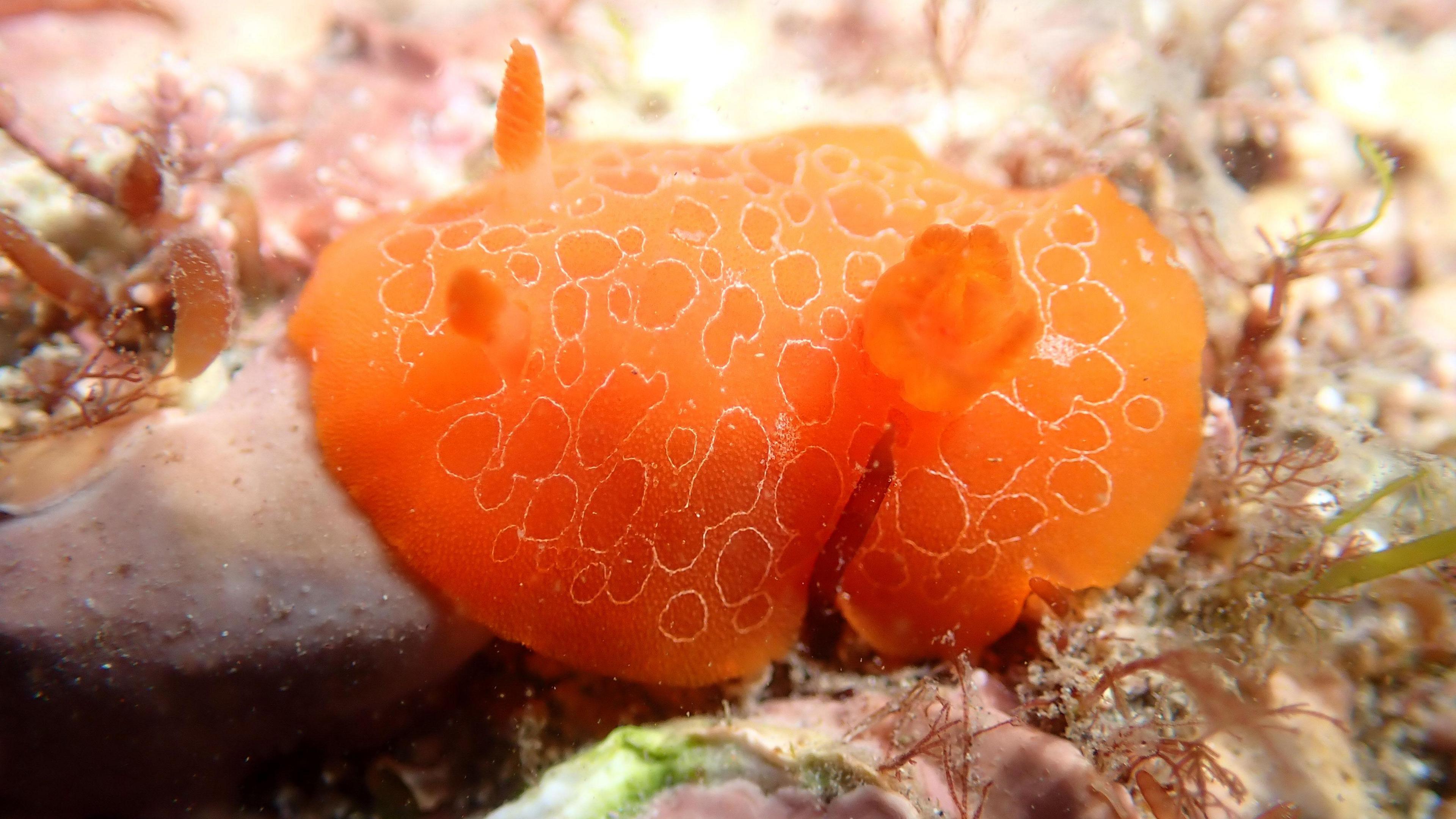The enthusiast searching for stunning sea slugs
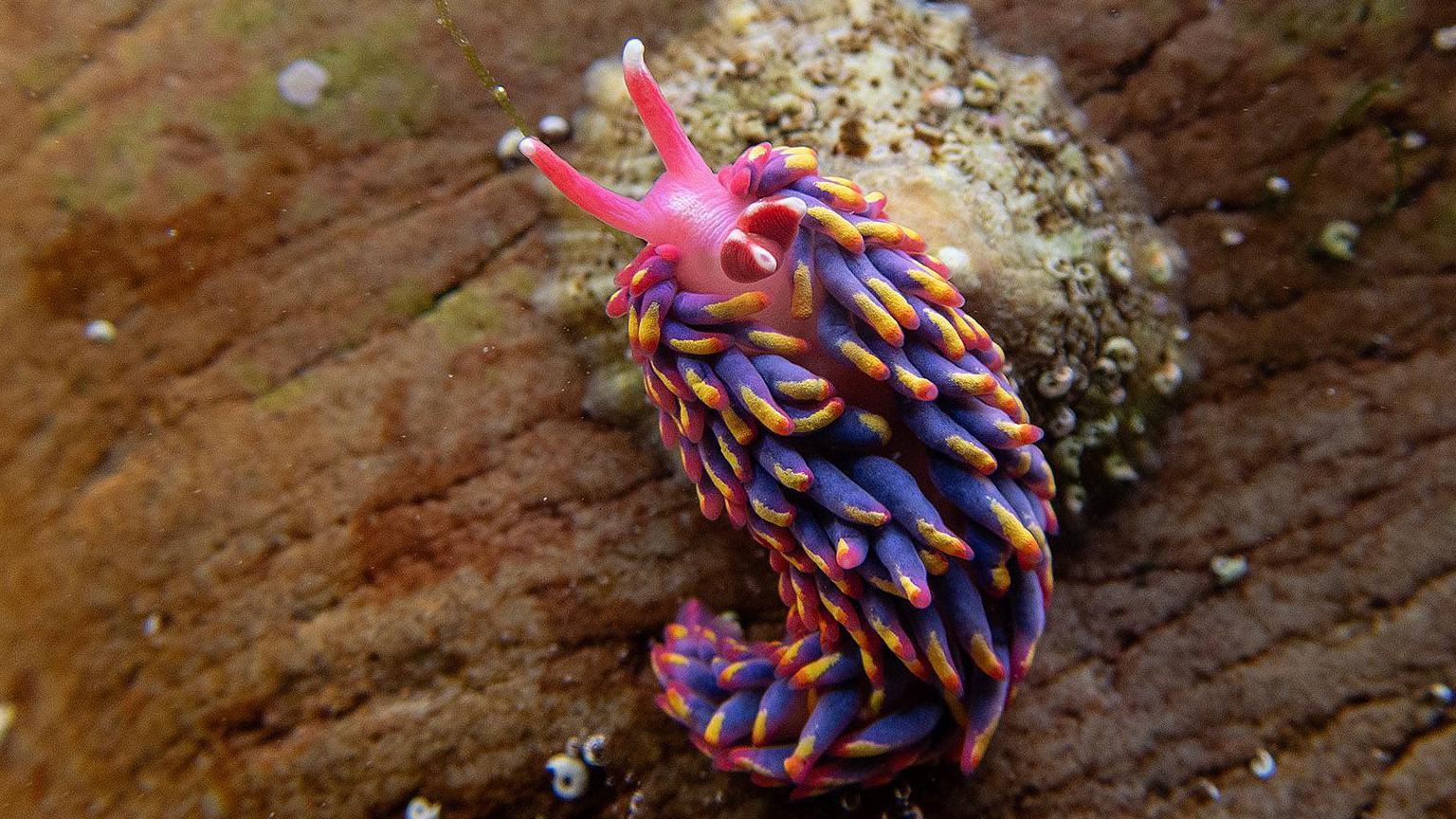
A rainbow sea slug was found in the Isles of Scilly in 2022
- Published
"Sea slugs are like normal slugs you find in your garden but jazzed up," Eleanor Goodman says.
Ms Goodman, a Devon Wildlife Trust volunteer based at Wembury Marine Centre, said she was passionate about sea slugs because they are "one of the most colourful rock pool species you will find".
She said there were more than 100 species of the creatures, also called nudibranch, and they were a lot smaller than terrestrial slugs.
The intertidal enthusiast spends much of her time trying to find them on the shoreline and says they are "absolutely stunning".
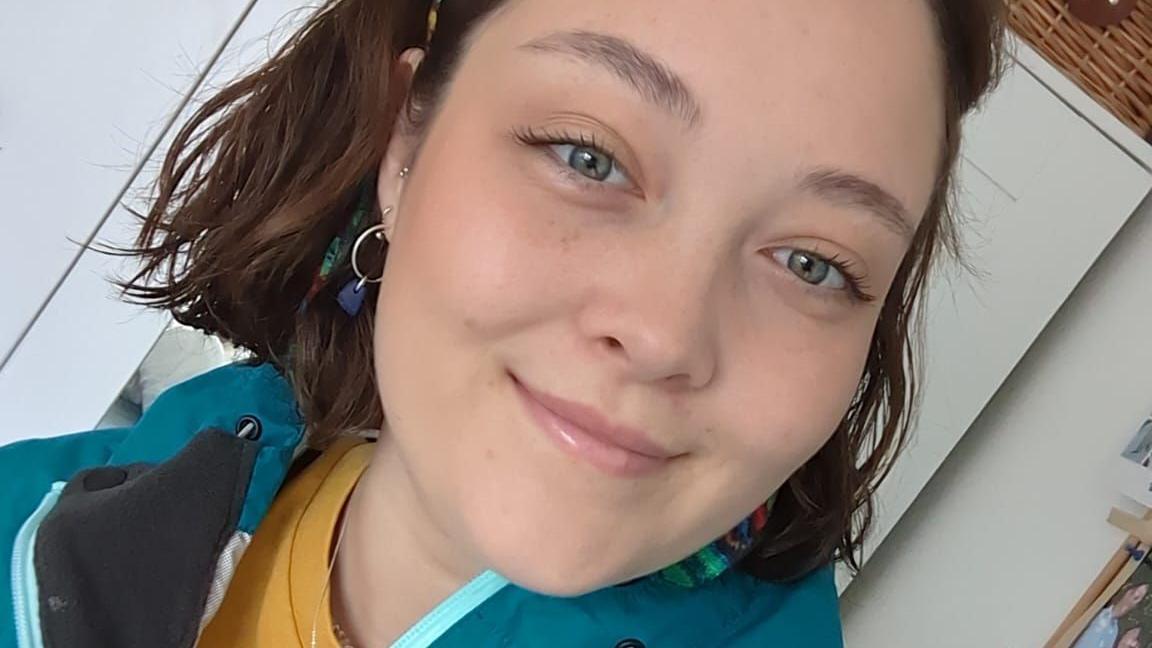
Eleanor Goodman said many sea slugs resided in the south coast because the water was a little bit milder
Ms Goodman, whose day job is a marine officer for Natural England, said the invertebrates can be found anywhere on rocky shores and down to the subtidal zones.
Many of them line along the south coast because the waters are a "little bit milder" and tended to be relatively sheltered, she said.
"Sea slugs love gullies, kelp forests and seaweed and they have a wide range of habitats."
The 27-year old said people had to be "lucky" to see the colourful species because the smaller ones are only a couple of millimetres and the larger ones measure a couple of centimetres.
"What I normally do is get right down, nose to the water and bottom in the air," she said.
"If you have got a good pair of eyes and patience, anyone will be able to see them."
- Image source, Nathan Jackson
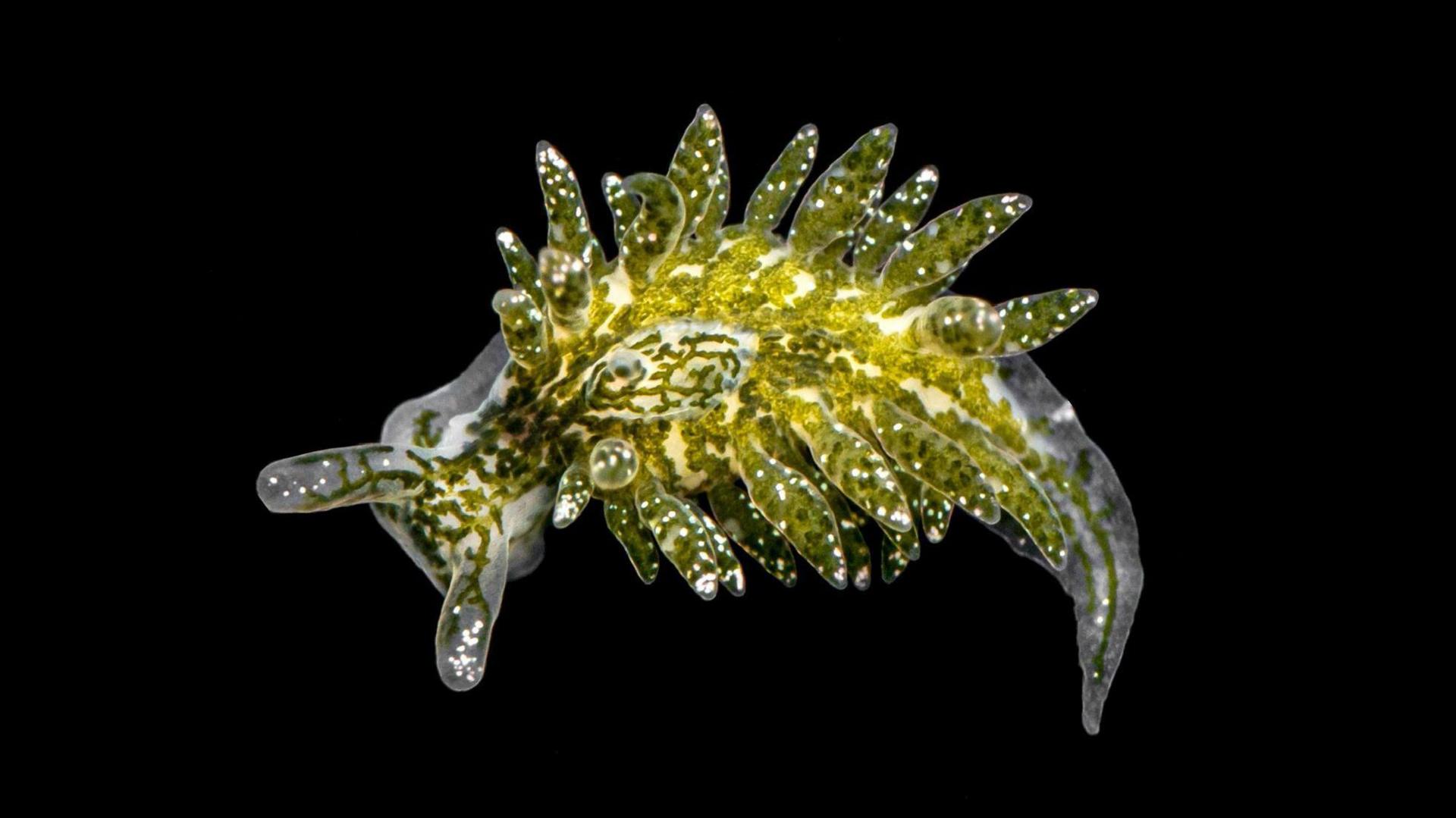
1 of 4
Ms Goodman said she was passionate about all marine life, but there was something special about sea slugs.
"There is something really lovely in slowing down, being patient and getting your eye in and looking very closely at rock pools.
"I didn't even know sea slugs were a thing when I first started rock pooling, I thought it was just crabs and starfish.
"They are absolutely stunning- I just love them."
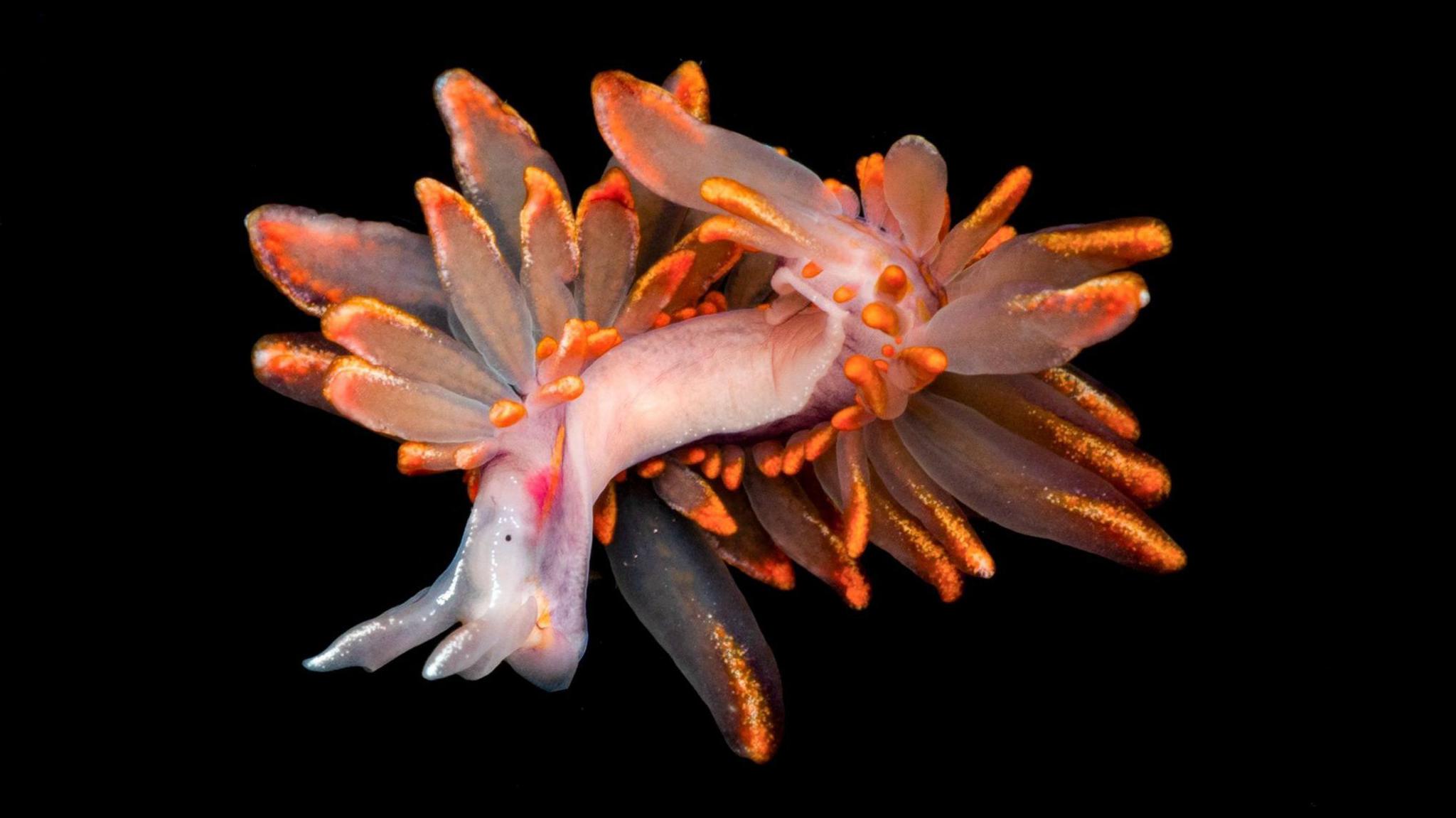
Sea slugs can be found in a variety of colours, shapes and sizes
In 2022 a rainbow sea slug was discovered in the Isles of Scilly which was neon purple, pink and yellow.
She said there was also another species named the Disco Doris which looks like "70s wallpaper".
"It's like a slug going to a rave," she said.
"They are just so gorgeous, they come in a wide range of colours and definitely one of the most colourful rock pool species you will find."
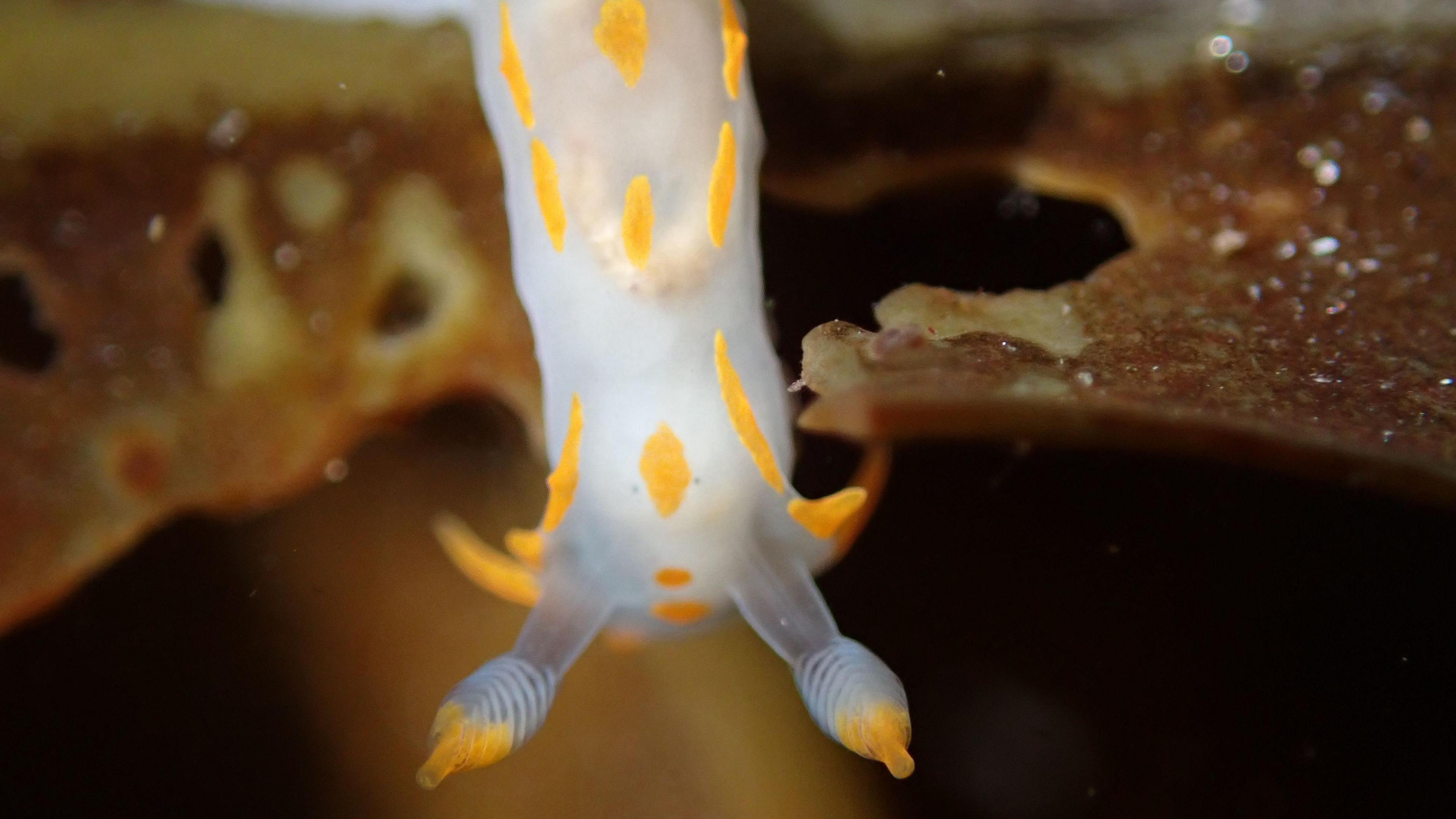
Eleanor Goodman said most sea slugs fed on anemones, seaweeds, marine algae and bryozoans
Ms Goodman said most of them had highly specialised diets.
She said: "Mostly feed on anemones, seaweeds and marine algae, hydroids and bryozoans, and other sea slugs and sea slug eggs."
It is her mission to find as many species of sea slugs as possible and anyone who finds one should record them on iNaturalist , externalto add data to the biodiversity network.
"Some sea slugs are climate change indicators," Ms Goodman added.
"Some come from the Mediterranean and they are migrating northwards, expanding their ranges so it is nice to paint a picture of how the seas might be warming and how that might change our waters."
Follow BBC Devon on X, external, Facebook, external and Instagram, external. Send your story ideas to spotlight@bbc.co.uk, external.
Related topics
Related internet links
- Published13 August 2024
